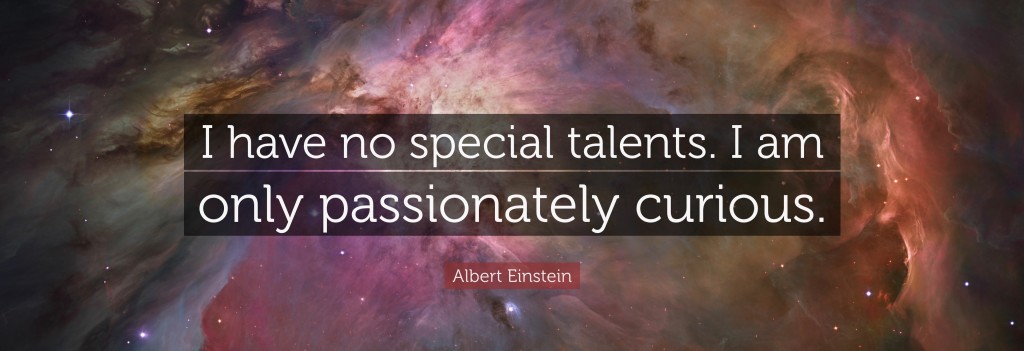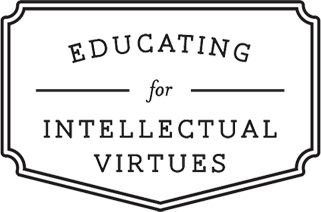
Assessment
The aim of intellectual character education is to help students grow in intellectual virtues within an academic context. Educators who practice this approach will rightly desire some sense of whether their efforts are successful, that is, whether or how much their students are growing in qualities like curiosity, attentiveness, intellectual thoroughness, and intellectual humility. This in turn requires being able to measure or track the growth in question.
The measurement challenge
Assessing intellectual character growth is a difficult and complex endeavor. For one thing, such growth is largely “internal.” It involves the modification of psychological states like beliefs, desires, attitudes, and feelings, all of which are difficult to measure in a reliable way. Furthermore, intellectual virtues don’t pop up overnight. They take time to develop. Therefore, trying to measure growth in intellectual virtues within relatively brief windows of time can be a futile exercise. Finally, the “science” of tracking growth in intellectual virtues is in its infancy. While some good resources exist, and while several promising research projects aimed at developing valid measures of intellectual virtues are underway, the present capacity for reliably measuring intellectual character growth is very much a work in progress.
"Assessing intellectual character growth is a difficult and complex endeavor ... It involves the modification of psychological states like beliefs, desires, attitudes, and feelings, all of which are difficult to measure in a reliable way."
Some guiding principles
What follows is a brief description of several principles and suggestions that you may wish to keep in mind as you attempt to assess your students’ progress in intellectual virtues. More in-depth treatment of this topic can be found in chapter 10 of Deep in Thought: A Practical Guide to Teaching for Intellectual Virtues.

First, we must be careful and thoughtful about how we use the data we collect, and specifically, about whether or how much of this information we share with our students. At a minimum, we should avoid using character-based data to cajole or shame students into behaving in intellectually virtuous ways. Such an approach is likely to have a detrimental and counterproductive effect. Further, when we do share this feedback with our students, we should take steps to prevent it from having unintended consequences for their intellectual motivation. We should, for instance, exercise caution to ensure that this feedback doesn’t increase their external motivation to think and learn, thereby decreasing their internal motivation (Deci and Ryan 2001).
Second, we must be realistic about the entire process of character-based assessment. This includes being realistic about the kind of growth that is possible and therefore capable of being measured (especially over shorter periods of time). Accordingly, when we set out to measure our students’ progress relative to certain character-based goals, we must ensure that these goals are realistic (that we don’t set the bar too high) and that we give our students ample time to achieve them.
"... intellectual character growth is multi-faceted. As a result, it can be very difficult to measure using a single instrument—or even a single type of instrument."
Third, and most importantly, intellectual character growth is multi-faceted. As a result, it can be very difficult to measure using a single instrument—or even a single type of instrument. Therefore, it can be helpful to divide your idea of what intellectual character growth looks like into different parts or dimensions and to use distinct assessments to track your students’ progress along these different dimensions. This point bears further explanation and illustration.
Three dimensions of an intellectual virtue
Intellectual virtues have at least three primary dimensions. First, to possess an intellectual virtue, one must possess a certain ability or skill. In the case of open-mindedness, for instance, one must be competent at a certain kind of perspective-switching—at taking up and giving a fair and honest hearing to points of view very different from one’s own (Baehr 2015). (An analogous point can be made about any intellectual virtue, for every virtue has a characteristic skill or ability—a skill or ability that sets it apart from other virtues.) Second, one must be motivated to use this ability or skill, and to use it for the right reasons. A genuinely open-minded person gives a fair and honest hearing to opposing points of view (at least partly) because she desires to learn and understand the way things are. Her open-minded activity is (at least partly) intrinsically motivated (Zagzebski 1996). Third, an open-minded person must have good judgment about when and where and how much to practice open-mindedness (Ritchhart and Perkins 2000). If a person is presented with an obviously foolish or outlandish proposition (e.g. that the moon is made of green cheese), it may not be a failure of open-mindedness if the person chooses not to take the claim very seriously. As this brief overview suggests, intellectual virtues have a skill dimension, a motivation dimension, and a judgment dimension.
"A genuinely open-minded person gives a fair and honest hearing to opposing points of view (at least partly) because she desires to learn and understand the way things are. Her open-minded activity is (at least partly) intrinsically motivated."
Given this “three-dimensional” model, when it comes to tracking a student’s progress relative to a given virtue (e.g. open-mindedness, intellectual courage, or curiosity), we will want to measure how well the student is doing along each of the dimensions in question: for example, whether she has the virtue-specific skill, whether she is motivated to use this skill (and whether this motivation is at least partly intrinsic), and whether she has proper judgment about when or how much the skill should be used. Unsurprisingly, we are unlikely to get this information from a single type of measurement. Instead, we will likely need to use different assessment tools to measure progress along these different dimensions.
To measure a student’s possession of a virtue-specific skill, we might use a self-report measure that targets the actions involved with this skill or seek corresponding feedback from the student’s teachers. To measure intrinsic motivation, we might employ a different self-report measure or seek additional feedback from teachers (or parents). To determine whether students have good judgment relative to a given virtue, a different kind of assessment might be in order. Here we might, say, provide students with a list of scenarios and ask them to identify which virtues are called for in each scenario. Again, for more on these points, and for some sample resources, see chapter 10 of Deep in Thought: A Practical Guide to Teaching for Intellectual Virtues .

Two additional facets of intellectual character growth
Two additional facets of intellectual character growth are worth paying attention to. While knowing about intellectual virtues isn’t required for having intellectual virtues, such knowledge can be useful in our attempts to practice—and thereby to grow in—these qualities. For example, if you know what intellectual thoroughness is and have a good sense of why it is important, this can help alert you to opportunities to practice intellectual thoroughness and bolster your motivation to do so. This is why “direct instruction” in intellectual virtues, while not very powerful by itself, nevertheless is an important part of an overall approach to educating for intellectual virtues. Therefore, when tracking our students’ progress in intellectual virtues, it can also be useful to track their understanding of these qualities. This can be done in fairly straightforward ways, for example, by asking students to define, describe, or explain the value of whichever virtues we are concerned with.
"While knowing about intellectual virtues isn’t required for having intellectual virtues, such knowledge can be useful in our attempts to practice—and thereby to grow in—these qualities."
Similarly, “self-knowledge” is not itself a core ingredient of most intellectual virtues. And yet it can be very helpful in a person’s attempts to grow in these qualities. Specifically, knowledge of our own intellectual character strengths and weaknesses can serve as a useful foundation for our attempts to practice intellectual virtues. It can provide us with insight into which virtues we most need to practice and which ways of doing so are likely to work best for us. By contrast, if we are ignorant of or deceived about our intellectual character strengths and weaknesses, our efforts to grow in intellectual virtues are likely to be misguided. Therefore, when trying to measure our students’ growth in intellectual virtues, it can be helpful to ascertain how well they know their own minds. While challenging, this can also be achieved through a combination of direct and indirect measures, for example, by asking students to describe their intellectual strengths and weaknesses and assessing their answers for depth and concreteness, or by asking them to rate how well they know their intellectual strengths and weaknesses and comparing these reports (for accuracy) with corresponding input from other knowledgeable parties (e.g. teachers or parents).
The discussion above highlights five dimensions of intellectual character growth. It also points in the direction of assessments relevant to each of these dimensions. The overall “character profile” a teacher might get from using an approach like the one just sketched admittedly is complex. It certainly doesn’t provide a recipe for anything like a character-based “grade.” But this may not be a bad thing. Again, our intellectual characters are complex and multifaceted. We should expect any assessment of them to reflect this structure.
References
Baehr, Jason. 2015. “The Four Dimensions of an Intellectual Virtue,” in Chienkuo Mi, Michael Slote, and Ernest Sosa (eds.), Moral and Intellectual Virtues in Western and Chinese Philosophy (New York: Routledge): pp. 86-98.
Deci, Edward, Richard Koestner, and Richard M. Ryan. 2001. “Extrinsic Rewards and Intrinsic Motivation in Education: Reconsidered Once Again,” Review of Educational Research 71/1: pp. 1-27.
Ritchhart, Ron and David Perkins. 2000. “Life in the Mindful Classroom: Nurturing the Disposition of Mindfulness,” Journal of Social Issues 56/1: pp. 27-47.
Zagzebski, Linda. 1996. Virtues of the Mind (Cambridge: Cambridge University Press).


